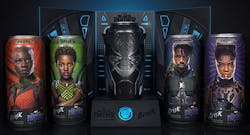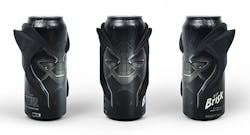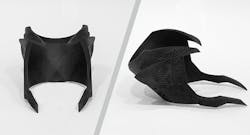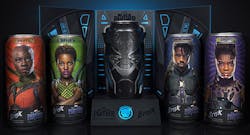It goes without saying that making movies can be expensive. Most costumes, props, and sets are one-offs or produced in low volume. This has led to 3D printing taking the limelight in many films, both on the big screen and behind the scenes. One of the first films I remember that used 3D printing was “The Fifth Element” in 1997; a huge Bio-3D printer was used to make Leeloo, the main character. The same idea was also used to bio-print Vision, a recurring character in the Marvel Universe movies.
3D printing was introduced in movies and TV long before most people knew that it was a real process. And after years of development and advances, movies are now upscaling the use of 3D printing for movie production. In stop animation, having the ability to print characters can save time and money. In addition, the technology is used in printing large quantities of props. Not only are some props complex and larger than life, but they might only make one. Sculping props by hand is tedious, time-consuming, and expensive. But recently 3D printing has even been used for promotional and collector items.
In anticipation of the “Black Panther” movie premiere, Pepsi and Protolabs partnered to develop a limited-edition kit featuring several new technologies and manufacturing processes. The kit contained five cans representing each of the movie’s main characters and a 3D-printed Black Panther mask that fit onto the corresponding can.
The mask had to be developed quickly so it would be ready for the premiere of the movie.
“Much of this kit was inspired by the costumes and characters from the movie,” said Andrew Phinney, an R&D packaging engineer at PepsiCo. “This was an exciting opportunity for us to incorporate new technologies to develop unique textures, graphics, dimensional elements, and lighting to bring the kit to life.”
Low Volumes of Highly Complex Parts
The first challenge was how to manufacture the complex low-volume parts. This quickly led them to 3D printing. They only needed 250 parts, and molds would take too long and be costly for such low volumes.
“Given the detailed features on the mask and the relatively low volumes of parts, we knew early on that 3D printing was going to be the most suitable manufacturing process for this project,” Phinney explained. “The volumes were not high enough to justify investing in an injection molding tool and we liked the design freedom that 3D printing provides.”
Fused deposition modeling (FDM) machines were used for early-stage prototypes to alter the original mask design so that it aligned with the artwork on the can and remained secure on the can during shipping. Once these small modifications were made, various 3D printing technologies were assessed for making higher-quality prototypes and eventually production.
Phinney noted that while researching suitable production-grade 3D printing processes, they considered five technologies in total. These included selective laser sintering (SLS), stereolithography (SLA), PolyJet, continuous liquid interface production (CLIP), and Multi Jet Fusion (MJF).
Multi Jet Fusion Meets the Mark
After evaluating the physical prototypes produced by three 3D printing technologies, the team chose to move forward with MJF due to its low cost, surface finish quality, and resolution, which precisely replicated the fine features in the mask design.
“When we received the Multi Jet Fusion part it was clear that this technology was going to meet the cosmetic requirements we outlined at the beginning of the design process,” said Phinney. “Not only did the part look great, but it was also the most affordable process among the final three technologies we considered.
The final product was a success. Pepsi created a stir and lots of free press with this kit that helped promote the movie and its product.
“Since the can was meant to be a collector’s item, we wanted a part that could last 10 to 20 years,” he added. “While other processes like SLA and PolyJet have high resolution, there was no guarantee that they would hold the deep black color and be able to last for several years.”
After some vibration, compression, and drop tests, the mask remained secured on the can and in less than six months, the full kit was conceptualized, engineered, and produced thanks to 3D printing. You may not notice that 3D printing is delivering high-end entertainment, but that’s the point—let 3D printing do the work, and let your audience enjoy the movie.




